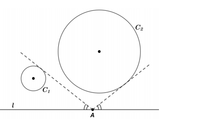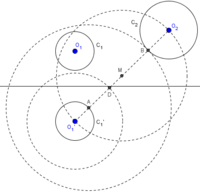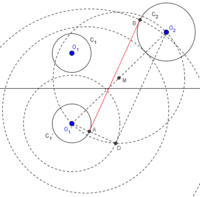A line 1 and two circles C1 and C2 are given,
disjuncts of l, situated in the same semiplane bounded by l. Tell how to construct with a ruler and measure a point A in l such that there are two lines running through A, one tangent to C1 and the other to C2, which make the same angle with l.
https://prnt.sc/os2w1t (this is the picture of the problem)
I think i need reflect one line tangent to C2 , so the angle will be the same . But don't know which line i need choose for that lines have tangent to C1 and the other to C2 which make the same angle with l. Can someone help me ? Thanks
disjuncts of l, situated in the same semiplane bounded by l. Tell how to construct with a ruler and measure a point A in l such that there are two lines running through A, one tangent to C1 and the other to C2, which make the same angle with l.
https://prnt.sc/os2w1t (this is the picture of the problem)
I think i need reflect one line tangent to C2 , so the angle will be the same . But don't know which line i need choose for that lines have tangent to C1 and the other to C2 which make the same angle with l. Can someone help me ? Thanks



